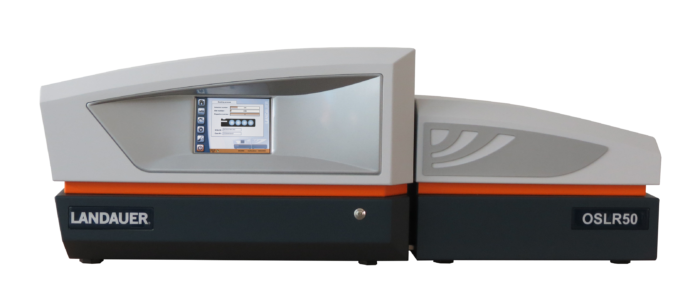About LANDAUER®
Founded 70 years ago, LANDAUER® is a COFRAC -ISO/CEI 17025 accredited dosimetry laboratory whose vocation is to carry out individual monitoring of the external exposure of workers subjected to ionising radiation in various professional environments: health, nuclear, industry, research and education.
With more than 250,000 dosimeters in circulation for 10,000 customers, LANDAUER® is the world leader in passive or delayed reading dosimetry. With a dozen sites close to its customers, its solutions enable the monitoring of 2 million workers in more than 30 countries, while the group also equips more than 200 laboratories that use its measuring devices and its OSL (Optically Stimulated Luminescence) technology. In order to cope with strong growth and to automate the production and distribution of the numerous documents linked to its activities as much as possible, LANDAUER® launched a project to industrialise its document flows in 2005, and then implemented a new in-house ERP system, which it continues to develop year after year.
About LANDAUER®
Founded 70 years ago, LANDAUER® is a COFRAC -ISO/IEC 17025 accredited dosimetry laboratory dedicated to the individual monitoring of the external exposure of workers exposed to ionising radiation in different workplace environments: healthcare, nuclear, industry, research and education.
With over 250,000 dosimeters in use by 10,000 customers, LANDAUER® is the world leader in passive or delayed-reading dosimetry. With around ten sites located in close proximity to its customers, its solutions are used to monitor 2 million workers in over 30 countries, while the group also equips more than 200 laboratories that use its measurement devices and OSL (Optically Stimulated Luminescence) technology. To cope with strong growth and to automate as much as possible the production and circulation of the many different documents associated with its activities, LANDAUER® launched a project in 2005 to industrialise its document flows, then rolled out a new in-house ERP, a system that it continues to develop every year.
The problem
Launched in 2005, the project aimed to automate as much as possible the management of document flows still carried out manually, at the outset, this focussed on those linked to invoicing (with almost 8,000 quarterly invoices), as well as shipping slips (i.e. 100,000 slips per year and 200,000 associated inspection reports).
Alain Hostiou, “Application Systems” Manager at LANDAUER®, explained: “The main aim when I joined the company in 2005 was to rethink our entire management system with the roll out of a new business ERP (developed in-house) and, at the same time, the integration and optimisation of the existing output management solution, MAPPING Suite, which was acquired by Efalia and has become Efalia Compose.”
The solution
Efalia Compose is a comprehensive output management solution that digitises and optimises the creation, circulation and “cross media”, as well as the archiving of all company documents to be dematerialised, while eliminating the various points of complexity in the different document output processes.
Alain Hostiou explained: “Our in-house ERP was produced in 2007, and at the same time, we launched a web portal for our customers (dental practices, hospitals, university hospitals, nuclear power stations, etc.) to enable them to view and download their invoices and other related documents. Since then, we have continued to develop our system, particularly thanks to this web portal, which has enabled us to digitise more and more documents.”
Today, almost all the documents produced as part of the Laboratory’s activities are automated and digitised, with the exception of shipping slips and labels (1 million pages per year and almost 50,000 shipments), which have been entrusted to an external partner and are therefore outsourced.
Alain Hostiou explained: “In concrete terms, the dosimeters are assembled at our production site in Vélizy, France, and sent to our customers, who wear them for one to three months and then return them to us for analysis and results. These same dosimeters are then repackaged and shipped back to customers, creating a virtuous loop that generates a large number of shipments.”

 Finance & Legal
Finance & Legal Quality
Quality Human Ressources
Human Ressources General Services/Administration
General Services/Administration Business
Business Modules
Modules Add on
Add on


